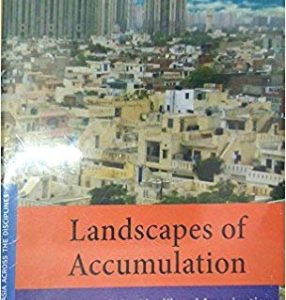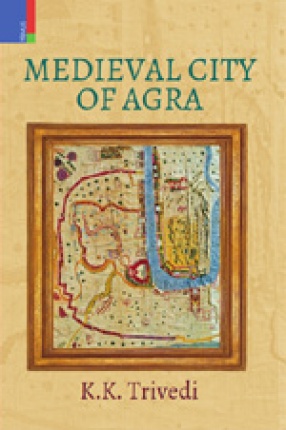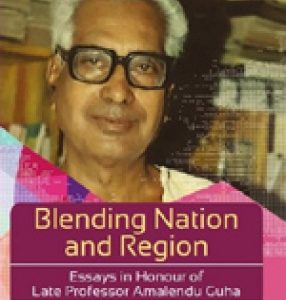
Primus Books

171 books











Over the past few decades, India has experienced a sudden and spectacular urban transformation. Gleaming business complexes encroach on fields and villages. Giant condominium communities offer gated security, indoor gyms, and pristine pools. Spacious, air-conditioned malls have sprung up alongside open-air markets.
In Landscapes of Accumulation, Llerena Guiu Searle examines India’s booming developments and offers a nuanced ethnographic treatment of late ...

Historians of religion have examined at length the Protestant Reformat on and the liberal idea of the self-governing individual that arose from it. In Modern Hinduism and the Genealogies of Self-Rule, J. Barton Scott reveals an unexamined piece of this story: how Protestant technologies of asceticism became entangled with Hindu spiritual practices to create an ideal of the ‘self-ruling subject’ crucial to both nineteenth-century reform culture and ...

Brought together here are ten essays, characterized by their dissent to the commonly accepted notions in the field, a first requirement for the growth of knowledge. Issues such as the dialectical process in the religious history of India; the much talked about Mauryan presence in south India; the contradictions in the construction of Kaliyuga in Puranic literature; political criticism in Sanskrit kavya poetry; regional identity and its varied perceptions; ...

In We Were Adivasis, anthropologist Megan Moodie examines the Indian state’s relationship to ‘Scheduled Tribes’, or adivasis—historically oppressed groups that are now entitled to affirmative action quotas in educational and political institutions. Through a deep ethnography of the Dhanka in Jaipur, Moodie brings readers inside the imaginative work of these long-marginalized tribal communities. She shows how they must simultaneously affirm ...

This volume studies the relationships between ancient systems of Asian philosophy and medicine. It explores the mutually dependent relation between the mind and the body, and argues that Asian and Hippocratic medical systems as well as the body and consciousness should not be studied in isolation. Bringing together medical practitioners and researchers including specialists of ayurveda, siddha, unani, homoeopathy, Sowa-Rigpa, naturopathy, yoga and acupuncture ...

The essays in this volume examine 'hidden histories' related to gender, religion, and reform in modern South Asia. Chapters from an array of eminent contributors examine Indo-Muslim cultures and political mobilization, literary aesthetics, and education, broadly defined. Dedicated to Gail Minault, a pioneering scholar of women's history, Islamic reformation, and Urdu literature, this volume raises new questions about the role of identity in politics and public ...

The text-archaeology correlation in respect of the Harappan Civilization shows that the Harappans and the people of the Rgveda were part of the same multi-ethnic, multilingual, multicultural geographical and chronological space; that a prolonged phase of geo-climatic devastations ravaging the Vedic Harappan subcontinent triggered an Ideology of nature worship in which prayers could be recited only in the Vedic dialect which, in-turn, put the Vedic-speaking ...

In the last decade or so, there has been substantial development in understanding the behavioural patterns of past hunter-gatherers societies. Although images of existing hunting-gathering populations continue to be used as analogues in drawing inferences about the past, there has been a considerable shift in the analyses of both, the archaeological record and the ethnographic data as well as more meaningful engagement with inquiries in territoriality, mobility ...

Building Histories offers innovative accounts of five medieval monuments in Delhi-the Red Fort, Rasul Numa Dargah, Jama Masjid, Purana Qila, and the Qutb complex-tracing their modern lives from the nineteenth century into the twentieth. Mrinalini Rajagopalan argues that the modern construction of the history of these monuments entailed the careful selection, manipulation, and regulation of the past by both the colonial and later postcolonial states. Although ...

Indian nationalism has been a contested space over the last century. Claims and counter-claims have been advanced regarding its nature for long now. This book argues that there are multiple visions of Indian nationalism, each seeking hegemony over national discourse, and that divergences regarding the cultural-ideological contours of the idea of India are central to the contest over what Indian nationalism means.
Contesting Nationalisms identifies four strands: ...

Democracy in India deliberates on the various challenges confronting parliamentary democracy in India as well as provides new critiques of the manner in which democracy has functioned besides focusing on the strengths and weaknesses of Indian democracy. The volume contains essays on the theory and practice of democratic governance; the role of the judiciary in strengthening the legislative and executive functions of the state; the role of the media as the fourth ...

This book focuses on the interface of sustainability, ecology and the environment as reflected in literature and culture. This eclectic collection of essays examines how writers have, across the twentieth century and in the new millennium, addressed ecological crises and environmental challenges that cut across national, cultural, socio-political and linguistic borders. The book also singles out literary genres which are particularly sensitive to issues of ...

The anthropogenic impact on the environment has led to devastating consequences and irreversible damage to both humans and nonhumans. Environmentalists warn that the damage incurred so far threatens to intensify further due to the lack of adequate corrective measures. The Humanities cannot remain unresponsive towards this deterioration. The effort is directed towards erasing the binary opposition between Nature and Culture in favour of a more holistic and ...

The question of water and human dependence on river systems has become a major public concern of the twenty-first century. Based on a long term historical study of a flood country in the mid-Ganga basin, Speaking River: Environmental History of a Mid-Ganga Flood Country, 1540-1885 looks at the changing perception of the people of the Ganga region from a useful to a problematic river. Based on environmental, agricultural and cultural histories it explores the ...

Late Professor Amalendu Guha belonged to that first generation of historians in post-independent India who not just gave Indian history an identity but were also responsible for its decolonization, modernization and internationalization. When most historians were writing macro history, Professor Guha concentrated on regional history and brought into focus a region of India about which very little was then known-north-east India. Besides being an eminent scholar, ...

Immensely rich and diverse documentation for the region have resulted in exceptional growth in the research conducted on the history of medieval Rajasthan. Professor Dilbagh Singh has been one of the pioneers to explore archival documents of the different principalities of Rajasthan in his research and under his guidance, generations of researchers have been able to integrate archival documentation with extraordinary literary works available on that region. This ...

This volume is one of the first comprehensive contributions to the rapidly developing cross disciplinary scholarship that connects visual studies with South Asian historiography. The key purpose of the book is to introduce scholars and students of South Asian and Indian history to the first in-depth evaluation of visual research methods as a valid research framework for new historical studies. The volume identifies and evaluates current developments in visual ...

Variations in ceramics are culturally significant. These are an expression of the functions that they are meant to perform, the identity of a community and a reflection of time. It is therefore of great interest to archaeologists and anthropologists.
Ceramic Variability is based on a survey of villages in different parts of West Bengal to see ceramic variability that is noticed these days within a linguistically similar community occupying different regions. The ...




From the Oxus to the Indus explores the political and cultural history of the Indo-Iranian borderlands during the reign of the Bactrian and the Indo-Greek rulers known as Yavanas in the subcontinent. This was a region sans frontiere and shows unrestricted exchanges between cultures. In a sweeping survey of the power politics of the region this book identifies certain salient features of the political processes in the period discussed.
One of the major themes this ...

This book on the city of Agra makes a close examination of this medieval Indian urban centre that grew into a multifunctional town completely outside of the supposed agenda or impact of Turkish rule, as well as European influence. This enquiry uncovers possible deliberations in the evaluation of a settlement that was unknown in the sixteenth century, but which was to develop into an alternate prominent political centre in northern India. It is argued that while ...

This book traces the diplomatic connections and intellectual linkages of the Golkonda sultanate with Safavid Iran and Mughal Hindustan. Complementing studies of early modern empires, it examines a breadth of Persian manuscripts, epistolary correspondence, archival documents, and European travel accounts from the Deccan. It is one of the first of its kind to explore the movement of knowledge, talent, and people in the early modern world from the perspective of a ...
